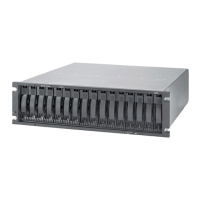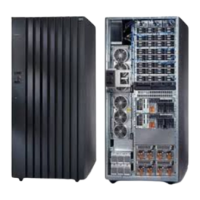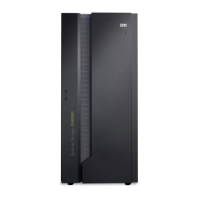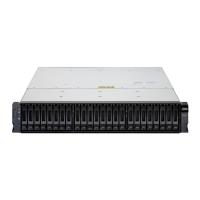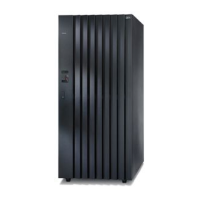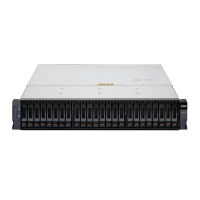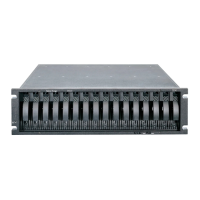Attention: Because the interconnect-battery unit provides electrical signal
connections between the controllers, removing the interconnect-battery unit
interrupts the communications between the controller units in the DS4800, resulting
in a loss of communication between controllers A and B. Data access is limited to
only controller A when the interconnect-battery unit is removed. Controller B is in an
offline state while controller A performs all controller operations. To prevent any
problems as a result of this condition, controller B must be placed offline before you
remove the interconnect-battery unit. See “Replacing the interconnect-battery unit”
on page 156 for more information. Failure to observe the instructions and
prerequisites described in “Replacing the interconnect-battery unit” on page 156
might result in a loss of data access.
Figure 7 shows how the interconnect-battery unit slides into the front of the storage
subsystem. The levers securing the interconnect-battery units to the storage
subsystem are shown in the released position.
The interconnect-battery unit contains two battery packs that provide backup power
to the controller cache memory. Each battery pack contains sealed, rechargeable
lithium ion batteries. The battery packs can maintain data in the cache for at least
three days.
The battery chargers in the power supply and fan units perform a battery test when
the storage subsystem is started and on a regularly scheduled interval thereafter.
Data caching is suspended during periods when the controllers performed battery
tests.
The interconnect-battery unit is hot-swappable. You can remove the
interconnect-battery unit for servicing and then reinsert it while the DS4800
continues to perform I/O operations.
Levers
in released
position
Interconnect-
battery unit
ds48017
Figure 7. Interconnect-battery unit
Chapter 1. Introduction 19
